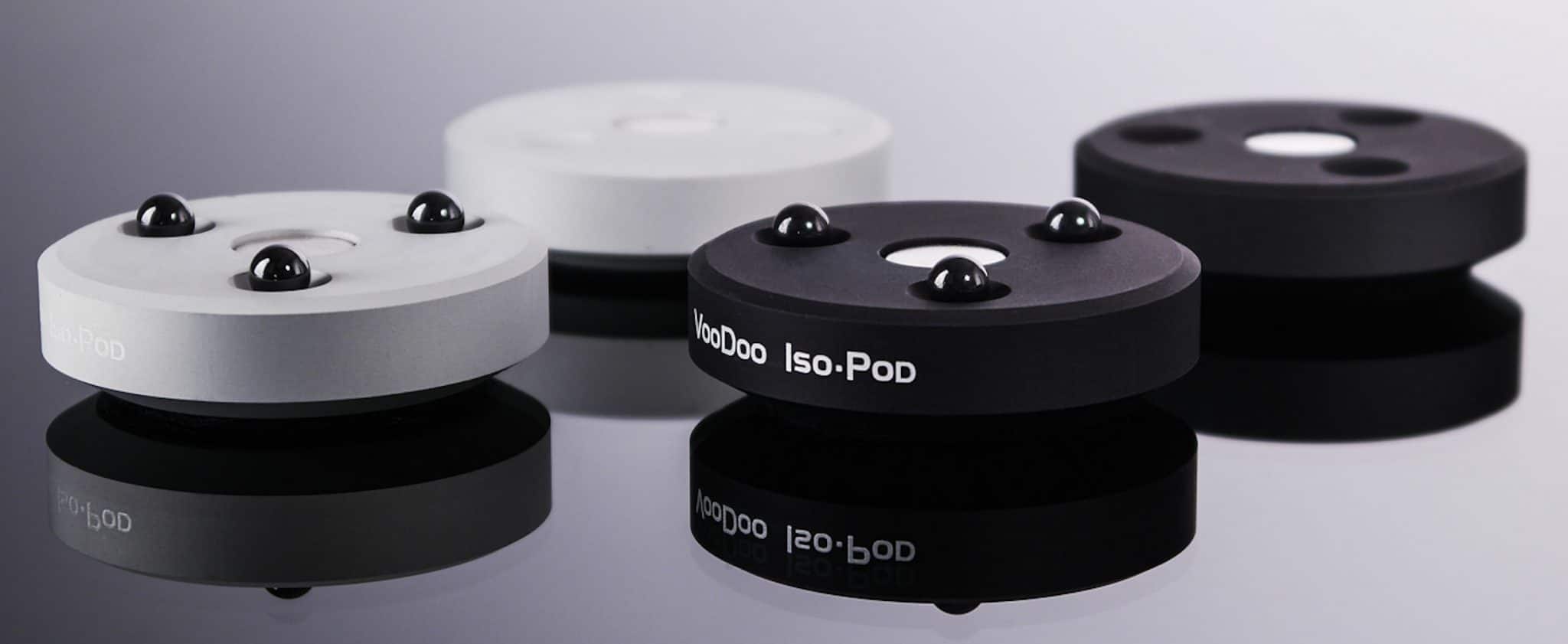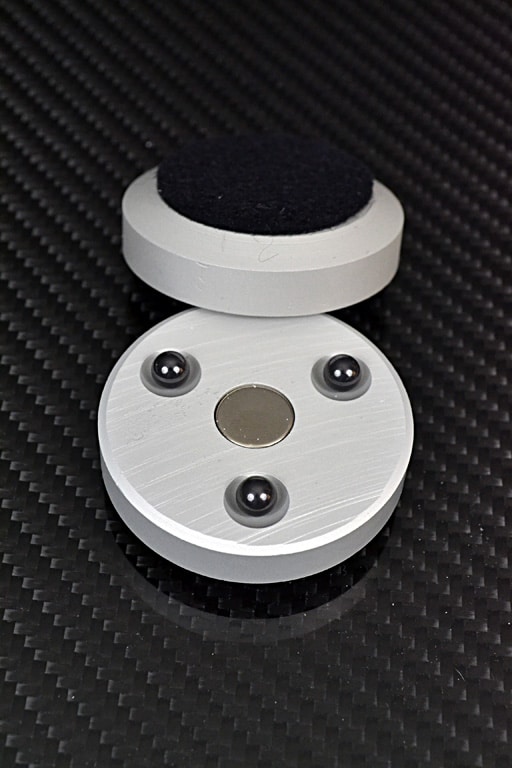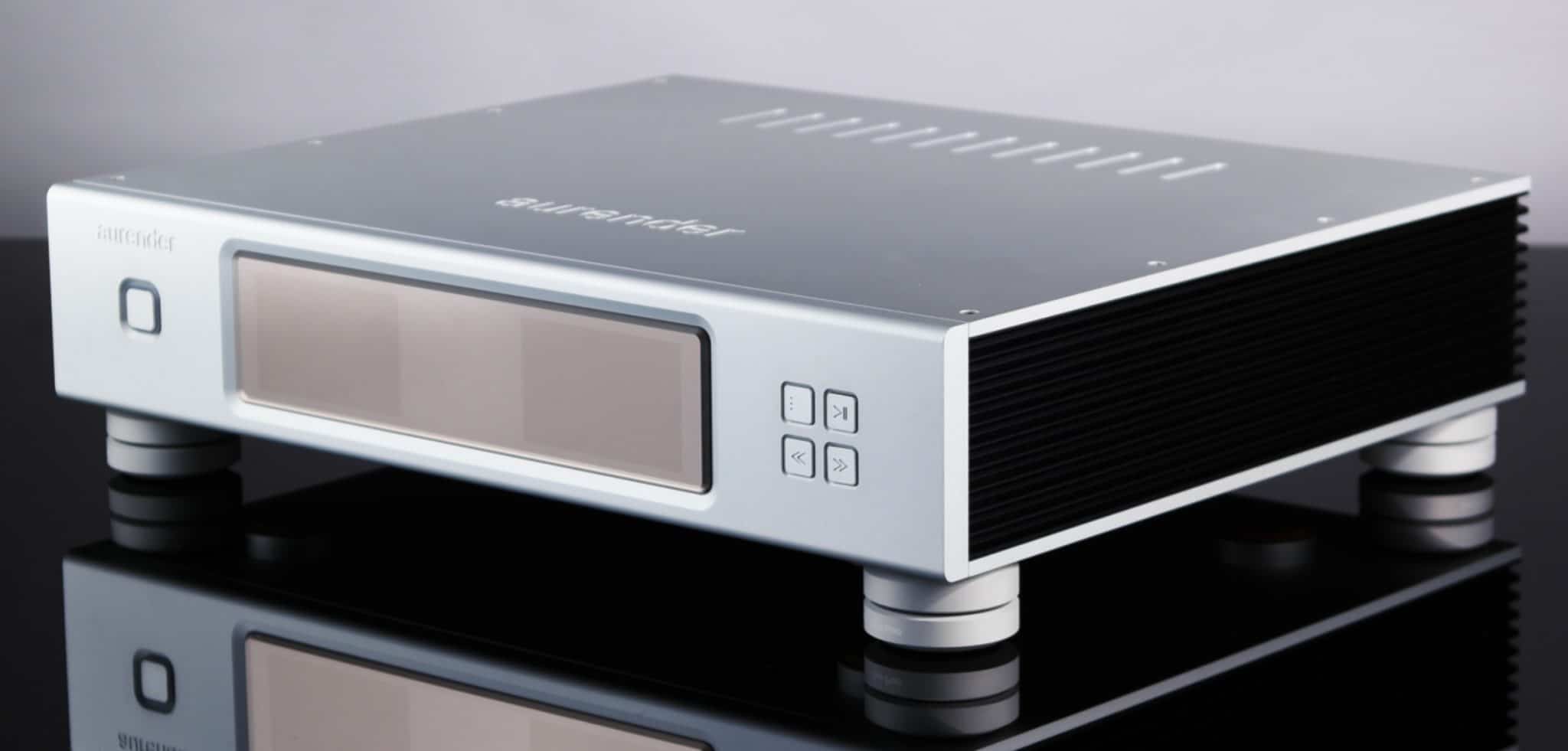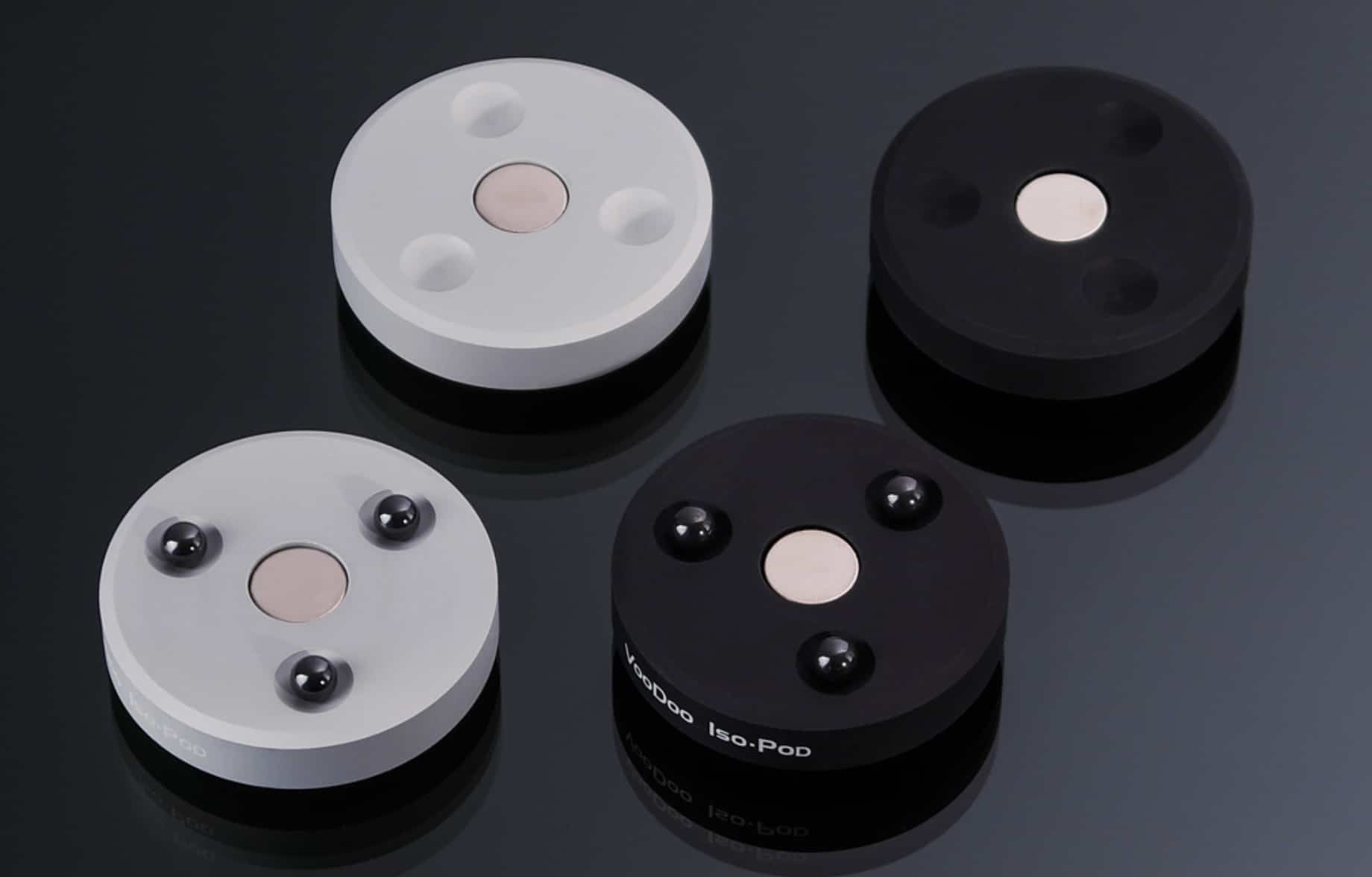The Article
ISO-POD ISOLATION FEET FROM VOODOO
30th August 2018
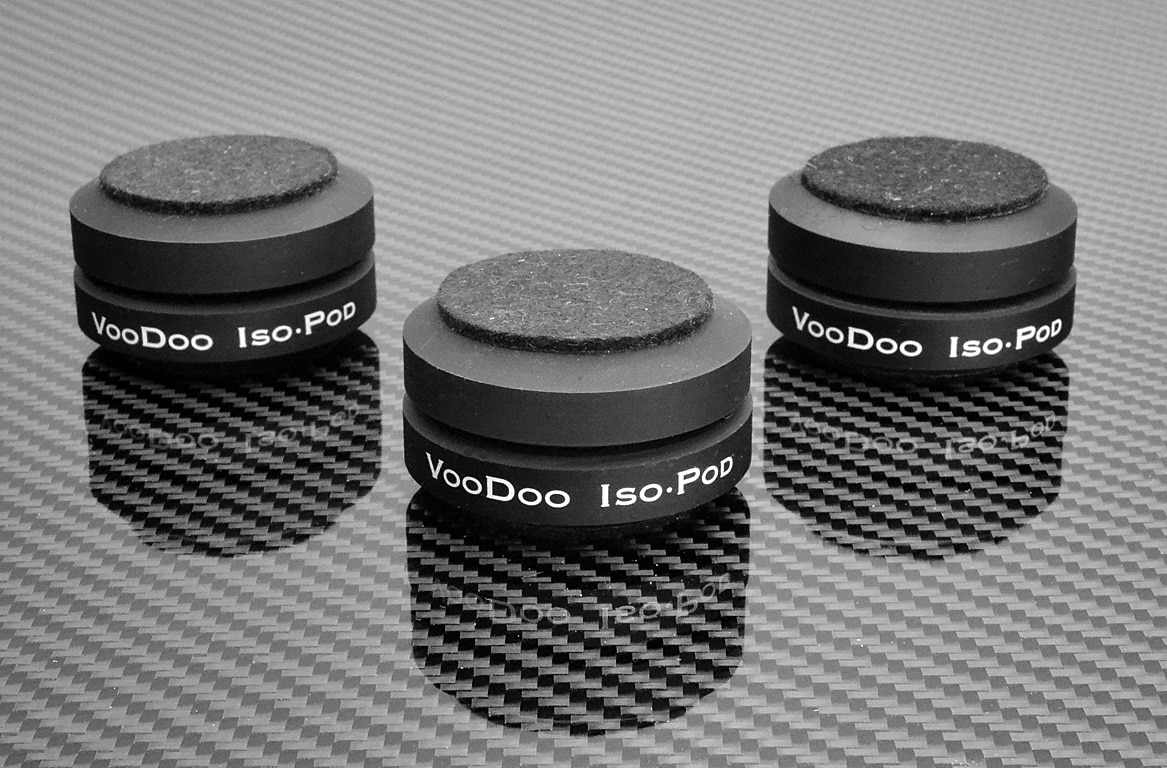
Looking to remove noise from around your hi-fi components? Paul Rigby reviews one contender, the Voodoo Iso-Pod
Removing vibrations and noise from your hi-fi is an important part of improving the overall sound quality of your system. If this stuff is ignored, it will veil detail and mask information which means that you will probably only hear around 60-70% of the overall potential of your precious components. More to the point, you’ll be wasting both your time and money. Many people think the job of seeking out top sound quality is completed when they hand over their hard-earned cash to their local hi-fi dealer for a new turntable, amp, speakers or whatever. Not at all. The job has only just begun because, when you place that hi-fi component in your listening room, your poor old turntable, CD player or whatever it is, is entering a noise-filled war zone.
To eradicate noise and vibrations from your listening room, you need a tool box of goodies including quality shelving, cables, mains blocks, grounding accessories and, yes, isolation feet. Isolation feet can drain noise and protect against vibration. Such feet won’t cure the problem (no one product will) but they are important parts of the solution.
Made in the USA, Voodoo’s Iso-Pods, available in a black or silver anodised finish, are made of CNC machined aerospace alloy discs suspended by zirconium ball bearings. Industrial-grade felt pads protect the underside of the component from scratches, stress marks and residue stains. Each Iso-Pod supports up to 250lbs, in old money, or around 113kg for the new guys in town. During the review, I placed the Iso-Pods both under the feet of the component (if those feet were tall and unremovable) and, if the Iso-Pods were higher than the component’s feet or could be removed, under a flat part of the underside of the component for improved results (see image above). Avoid placing the Iso-Pods in touch with bolts or screws underneath there. Doing so will minimise the Pod’s effectiveness.
If you insist on ‘poking around’, be slightly careful with the Iso-Pods. The three ball bearings are sandwiched between two shells, held together by strong magnets (see image above). Typically, my curiosity initially got me into trouble because I pulled these shell-like casings apart (they’re firmly attached, I had to apply a fair bit of effort) and all of the internal ball bearings went ‘Ping!’ and flew across the room. I found two of the three. The third obviously entered into another dimension because it was never seen again. So watch yourself.
SOUND QUALITY
I began the sound tests with David Bowie’s Low (1977) and the track Breaking Glass with the feet firstly under my turntable then to my phono amp and immediately noticed how large the sound stage was with the Iso-Pod feet in place. There was an admirable amount of air within which the vocals and instruments had room to manoeuvre. A good start because it meant the detail would not be cramped and dynamic range had a good running start.
I then moved through each instrument and was delighted to hear that detail was there in some quantity but it was also honed with a sense of precision. Hence, the bass guitar, which sits in the centre of the stereo image right alongside the gated drum sound and is easily masked by the strength of the same, was fine tuned in terms of its replay. There was a noticeable accuracy in how the bass guitar strings were plucked, adding a real rhythmic bounce to the guitar. That the drums didn’t bloom over the bass also showed how instrumental separation was in action here, allowing each musician space to do their thing.
On the left channel, the pulsing cymbals also exhibited a rare ‘ting’ effect. Rare because these cymbals have been processed a touch so there is less of the natural treble splash here. The Iso-Pods did manage to convey elements of the metallic responses, though. Surprising and welcome.
The droning rhythm guitar that lay across the rear of the soundstage was also a contender to be subsumed into the mix by more dominant instruments but here the increase in sonic accuracy enabled that guitar to become more noticeable to the ear.
I moved the Iso-Pod feet to my CD player and then my adjacent DAC while playing Don Cornell on CD and Heart of My Heart, a sort of honky tonk pop outing. I was impressed with the clean soundstage, which is a symptom of the low noise design of the feet. The track sounded scrubbed and free of sonic rubbish. This lead to Cornell’s vocal delivery being open and his diction precise and easily understood. The same could be said of his backing singers who were pushed further back in the mix. That distance was never a problem because the lyrics remained easily recognisable. Meanwhile, the lead guitar, performed well. In some cases, this guitar variant can suffer from blooming and smearing in the mids, the result of noise dragging, slowing and muddying the transient accuracy. Not here. The guitar offered a rather bouncy, bassy response, maintaining a sprightly pace.
CONCLUSION
The Voodoo Iso-Pod feet allowed the component they sat under – whether analogue or digital – to offer more control over high and low frequencies. This added discipline brought structure and, as a consequence, a measure of enhanced detail which allowed the music to become more expressive.
Price: £300 for a set of 3 feet, £400 for 4 feet
Web: www.mackenziehifi.com
Tel: 07905 362545
GOOD: tonal accuracy, low noise, expressive midrange, characterful bass
BAD: nothing
RATING: 8
[Don’t forget to check out my Facebook Group, The Audiophile Man: Hi-Fi & Music here: www.facebook.com/groups/theaudiophileman for exclusive postings, exclusive editorial and more!]
REFERENCE
Origin Live Sovereign turntable
Origin Live Enterprise 12″ arm
Van Den Hul Crimson XGW Stradivarius Cartridge
Leema Antila IIS ECO CD Player
Icon PS3 phono amplifier
Aesthetix Calypso pre-amp
Icon Audio MB845 Mk.II monoblock amplifiers
Quad ESL-57 speakers with One Thing upgrade
Vertex AQ, Gekko, Black Rhodium & Tellurium Q cable
Blue Horizon Professional Rack System
Harmonic Resolution Systems Noise Reduction Components
All vinyl was cleaned using an Audio Desk’s Ultrasonic Pro Vinyl Cleaner

